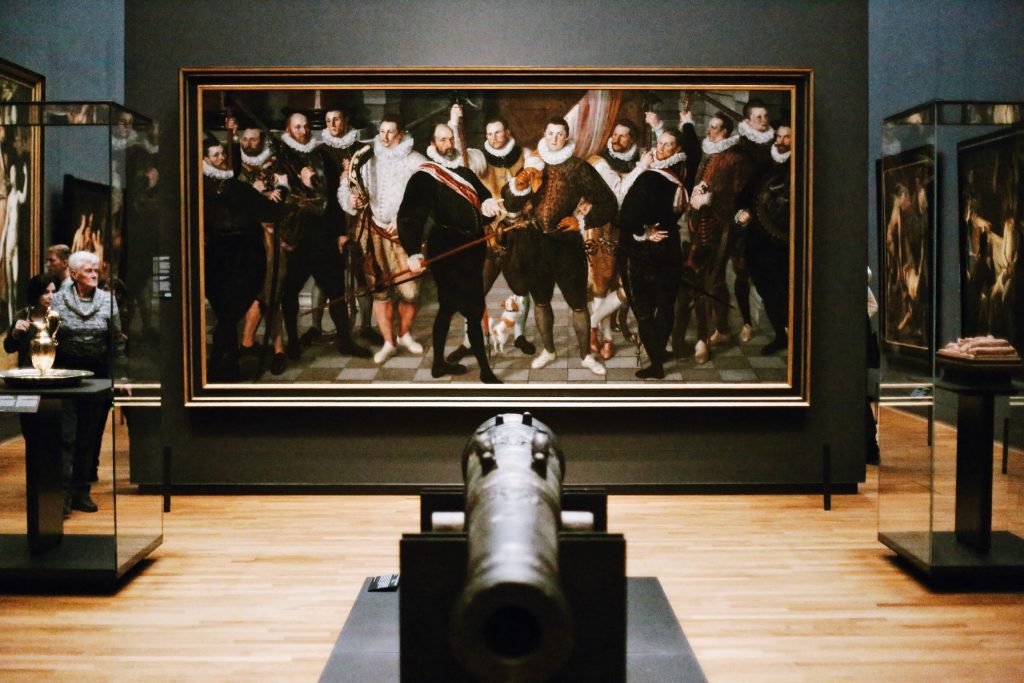
The Rijksmuseum had been looking to add this gold cup made by Paulus Willemsz van Vianen into its collection for years. The Gallery of Honor now displays this Vianen masterpiece for those on a Rijksmuseum tour to enjoy and admire. It is considered the most significant of every treasure to be part of the Netherlands royal family’s collection. The most popular Dutch silversmith of all time, Paul van Vianen made it in the year 1610.
After 1881, his creation had been with a private art collection in Germany. Considering the cup’s origin, it was offered to this Amsterdam museum in 2018. The family of the Wessels was ready to purchase the object and loan it to the Dutch museum for a long period of time.
The Rijksmuseum director, Taco Dibbits, said, “Paul van Vianen is to gold- and silversmithing what Rembrandt is to painting. It is wonderful that the Wessels family has made it possible for everyone to see this gold treasure, and this marks the fulfilment of a long-cherished dream of the Rijksmuseum.”
A Royal Asset
The Duke of Brunswick and Lüneburg commissioned Vianen to produce the cup. In the 1600’s, like now, gold was an extremely pricey material, plus the object had an important place at the early and royal form of museum where art objects were displayed. In the year 1623, it was transferred to the custody of Sophie Hedwig, the eldest daughter of the duke. She was the wife of Ernest Casimir I, Count of Nassau-Dietz who was also the chief magistrate of Drenthe and Friesland.
The object was stored in Ernest Casimir I’s royal room situated at Leeuwarden, the Friesland capital province. From 1711, it was stored at the Kunstkammer treasury in the city of The Hague, where it remained the then royal family, House Order of Orange’s property until 1881. Vianen’s creation is widely considered the most significant treasure of the royal family. After the wedding of Maria of Nassau and Prince Wilhelm of Wied, it was given to the latter’s family. The cup stayed with his family until recently.
Paul van Vianen
He enjoyed the status of being the most significant descendant of a family of Utrecht-based silversmiths. The next generations of silver article makers looked to Vianen for inspiration, plus artists gathered his original artworks or replicas of these. Rembrandt van Rijn was one of the artists that had casts of articles created by Vianen. He worked at many famous courts in central Europe before eventually being part of Emperor Rudolf II’s royal court in Prague. Vianen continued to work for the emperor until his demise in 1613.
Diana and Actaeon
This cup’s cover has the scene of deities acting out a sentence from a Terence play, asserting that, to succeed, love (Venus) has to have wine (Bacchus) and food (Ceres). The scene portrays an Ovid poem where a hunting Actaeon unwittingly chances on the Roman goddess Diana when she bathes in the company of her nymphs. Actaeon cannot turn away his eyes from her, and the goddess punishes the hunter for this. He is then turned into a male deer and subsequently killed by his companions. Juxtaposed thus, the two tales constitute a guiding principle for love: it can thrive only when there are enough drink and food, and harsh penalty awaits those that succumb to temptation.
The museum also has the coveted Diana and Actaeon basin, made of silver by this Dutch artist. It displays scenes based on the mythical tale of the goddess and hunter and has an Auricular-style border. The museum got this silver bowl in the year 1947.
An Addition to the Rijksmuseum’s Collection of Pieces by Vianen
As the lone famous piece of art by Vianen in private collection, the cup had been on top of the museum’s list of desired things since the 1800’s. That this masterwork would not be included in a public entity’s collection was assumed, though, and due to that, the museum had a gilt copper copy made in 1881. The institution’s collection includes numerous other artworks by Vianen, namely drawings, reliefs, sketches and plaques, in addition to two silver articles. Those objects made in silver are a 1607 drinking vessel and a jug and basin made in 1613.
Inside the cup, there is the engraving of a person. Below the underside of the object, there is an inscription, which includes the name Paulus of Viana and the year 1610.
Indispensable Support
After the start of the museum as Nationale Kunstgalerij, its collection has largely been made up of objects from national and private collections. The existence of this museum from that time to today depends upon bequests and presents from private parties, trusts, funds, businesses, foundations and the government. These entities make it possible for the museum to keep on connecting individuals, history and art.

